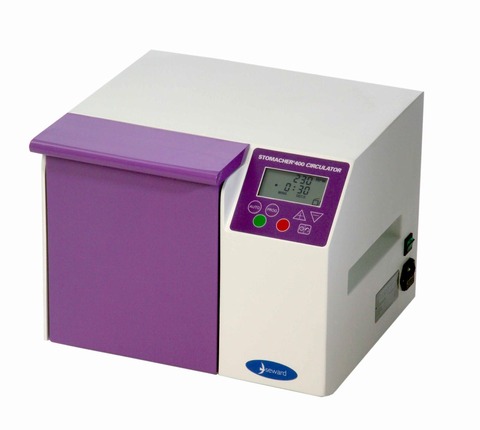
The Seward Stomacher technology is being applied in combination with sponge swabs for hygiene monitoring and biosecurity applications.
Hygiene monitoring in food and pharmaceutical production facilities and clinical environments requires simple sampling techniques with excellent microbial recovery rates across a spectrum of different species.
A recent study has confirmed the effectiveness of the combined sponge swab and Stomacher sampling methodology for sampling a large surface area.
The sampling method utilises sponge swabs pre-dosed with buffer to swab a surface and then, to recover the micro flora, the sponge swabs are processed in the Stomacher 400 Circulator.
A number of suppliers offer pre-manufactured devices which work very effectively in Stomacher products. Various different approaches can be applied, processing either pooled samples in the Stomacher 400 or individual swabs in the Stomacher 80 Biomaster.
Due to the efficacy of the Stomacher and sponge swab combination, it has also been adopted in critical fields such as biosecurity.
Security services on both sides of the Atlantic have adopted the technique to detect and monitor the potential spread of weaponised bacterial contaminates such as Bacillus anthracis.
The effectiveness of the sponge and Stomacher technique over the swab technique for sample collection is demonstrated in the recent paper - Thom K.A. et al.. Comparison of swab and sponge methodologies for identification of Acinetobacter baumannii from the hospital environment. Journal of Clinical Microbiology 2012, 50(6):2140.
It claims that the sponge and Stomacher technique allows for a greater surface area to be tested than achievable with a swab head. This also means that the sponge method delivers greater sensitivity.




